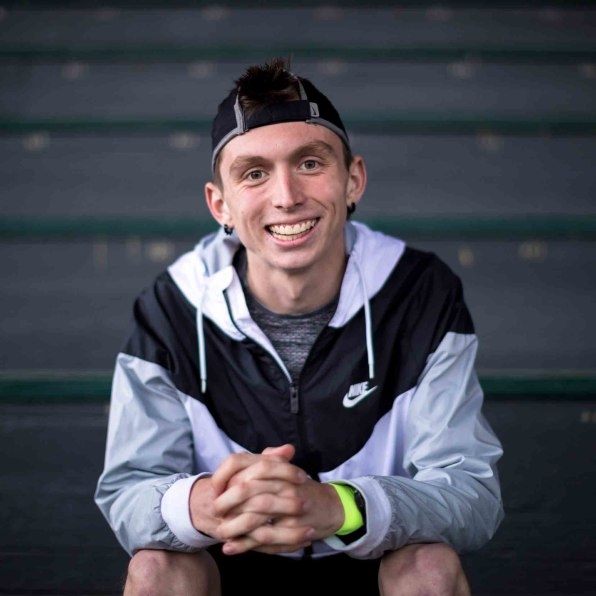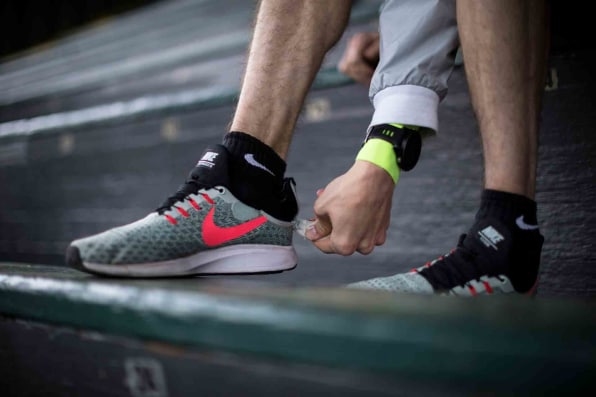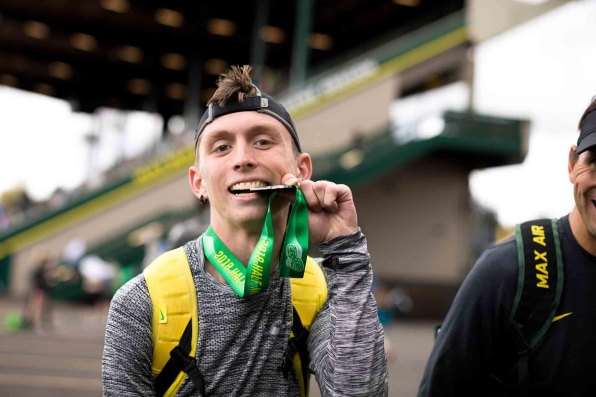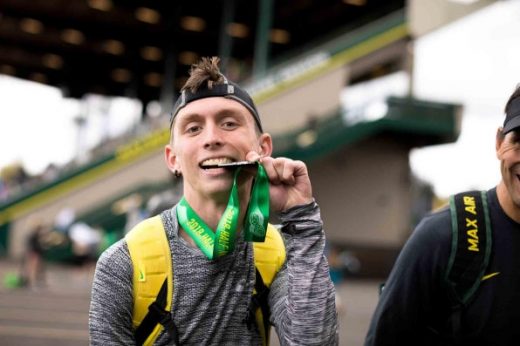How Nike Hooked Up The World’s First Marathoner With Cerebral Palsy
As a high school freshman, Justin Gallegos decided to take on running as an extracurricular. His first couple of days in the school running club didn’t go well. He kept falling, skinning his knees, then picking himself up only to falling over again.
Gallegos was born with Cerebral Palsy, which means he has little control over his muscles and body coordination. Most people with the disorder do not even attempt something as ambitious as running. Gallegos not only gave it a try, he was convinced that if he practiced enough, he would be able to do it. “I wanted to take part in an after-school activity just like everyone else,” he tells me. “And eventually, by repeating the running motion over and over, I trained my body to run.”

That was six years ago. These days, he’s a member of the track club at the University of Oregon. Not only does he religiously attend every practice–a feat in itself–he’s setting himself new personal records. This past weekend, he ran the Eugene Half Marathon, setting himself the goal of completing it in under two hours. He nearly made it, coming in at two hours and three minutes. But it was a major milestone. He was one of the first able-bodied runner with Cerebral Palsy to complete a half marathon unassisted.
Nike has been closely following Gallegos’s journey. Last year, when Gallegos set out to try to complete this half marathon, he shared this with one of his friends, John Truax, who was part of the Nike Running community. Given that Gallegos is based in Eugene, Oregon, not far from the Nike Headquarters in Beaverton, he was quickly connected with the team of scientists at the Nike Sports Lab, where researchers better understand the challenges that athletes face and work on developing products that can help them.
At the Lab, he was hooked up to all on the body scanning technology that Nike uses to study professional athletes. The researchers hooked him up to a GPS watch and heart rate monitor, then examined his baseline biometrics, particularly how his foot falls. A team even joined him on a race, to observe him in action.
Gallegos met Geng Luo, a biomechanics researcher, who studied Gallegos’s gait, which is unique and unlike traditional marathon runners. Luo studied the angle of Gallegos’s stride and how his foot landed on the ground. This helped the team figure out what parts of the shoe to reinforce. They created a shoe where the forefront was reinforced, since Gallegos experiences more pressure in this area. They discovered that when Gallegos’s foot strikes the ground, his entire bodyweight unloads in a very small area, so they provided extra cushioning in this area. They also make sure that the shoe had extra stability, since Gallegos has more trouble balancing than most.

Gallegos tried on dozens of different shoe prototypes that the researchers created. He’s settled on a version of the shoe that he’s now using to run races and marathons. One of his favorite features in the shoe is an easy and lightweight system involving zippers and straps that allows him to get into and out of the shoe very quickly. “When I first started running and my laces came undone, it would take me a long time to put them back on again,” he says. “Even leaning over was a struggle. So the new system means I don’t have to worry about this problem.”
Nike has been working on a version of this shoe that it will sell to consumers. It is part of the FlyEase series, which features the lace-free entry system, connecting an adjustable strap to a wraparound zipper, allowing the wearer to open and close the shoe in a single motion. The one that features the updates made for Gallegos will be called the Pegasus 35. It incorporates cushioning that responds to the runner’s movements. These shoes will be available to the public on July 1 on Nike’s website.

Gallegos is very happy that he could contribute to making these shoes. “There are other athletes that have special needs who will benefit from them too,” he says.
On Sunday, when Gallegos finally got to Mile 13, his supporters in the grandstands began cheering for him. And even though he missed his goal by three minutes, it was still an exciting moment. Now he’s setting his sights on running another half marathon by the end of the year. And maybe after that, a full marathon.
Fast Company , Read Full Story
(53)


